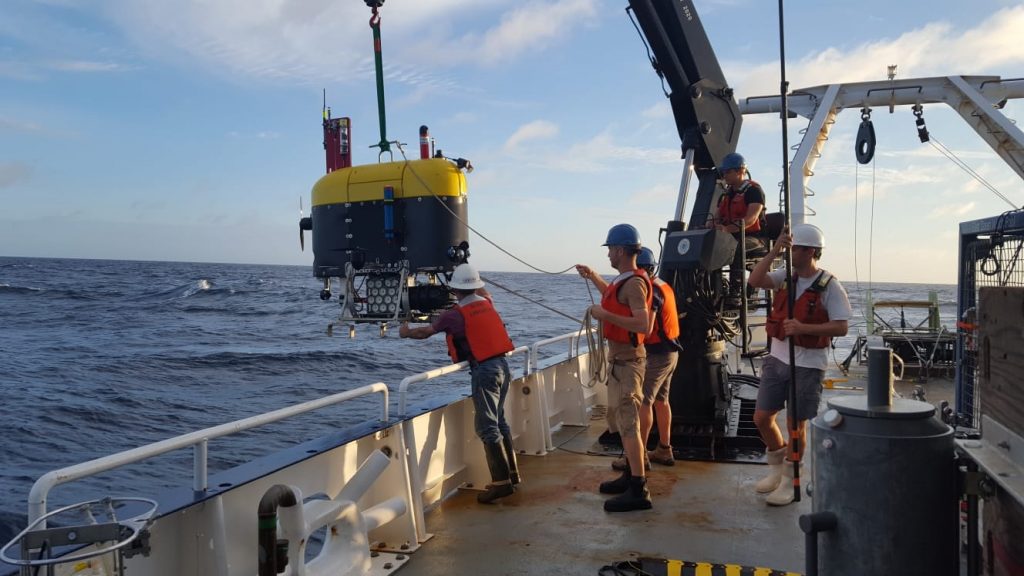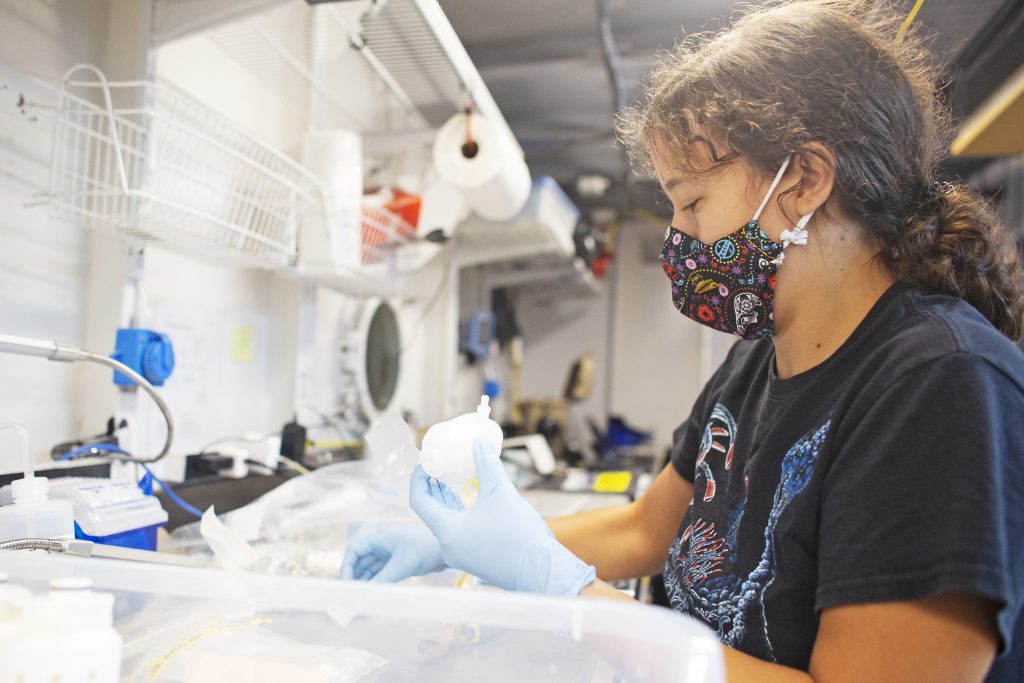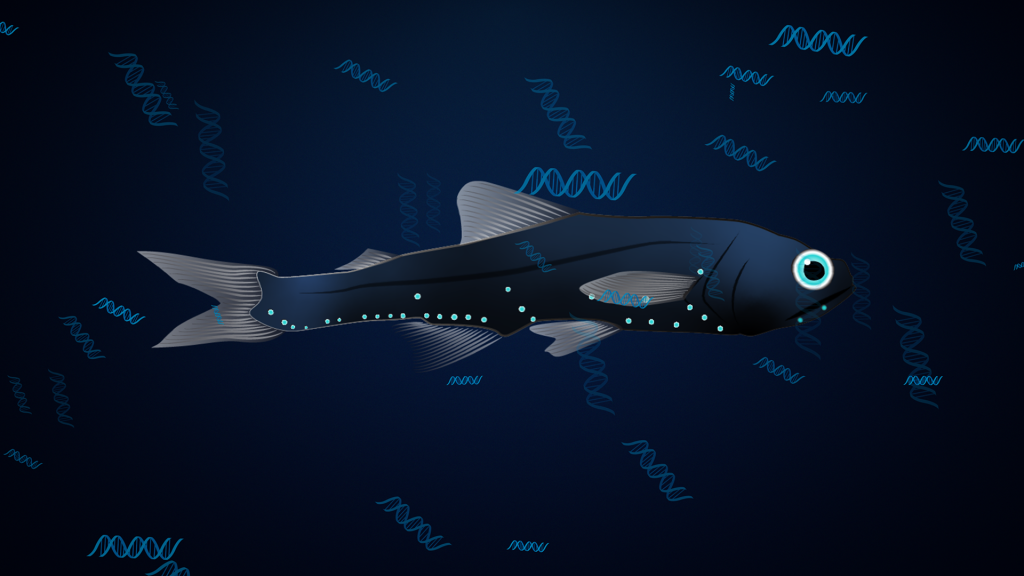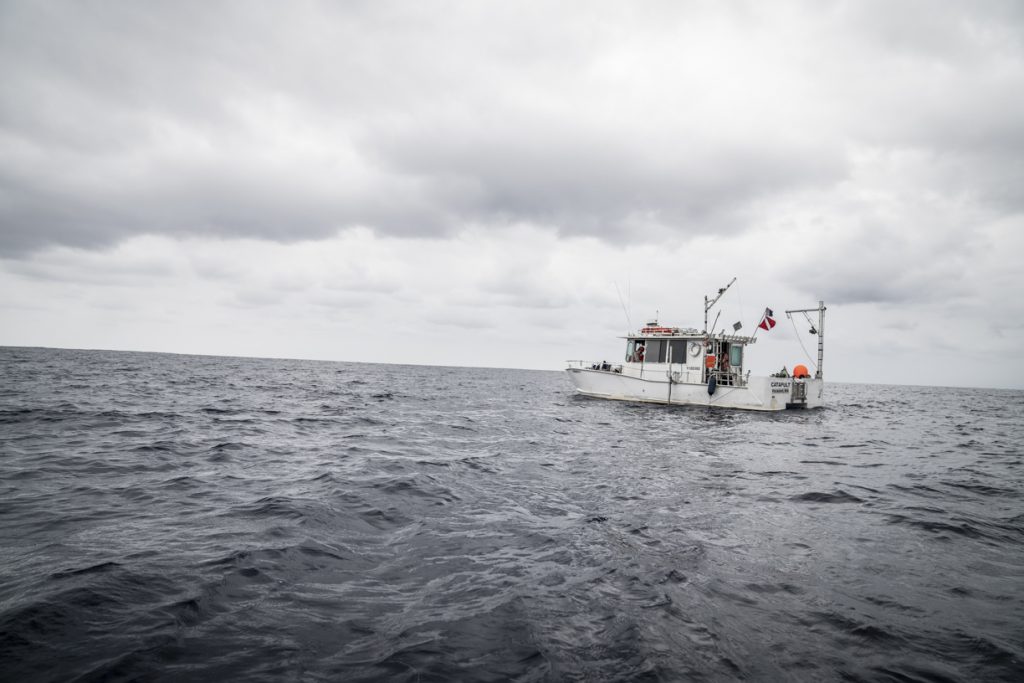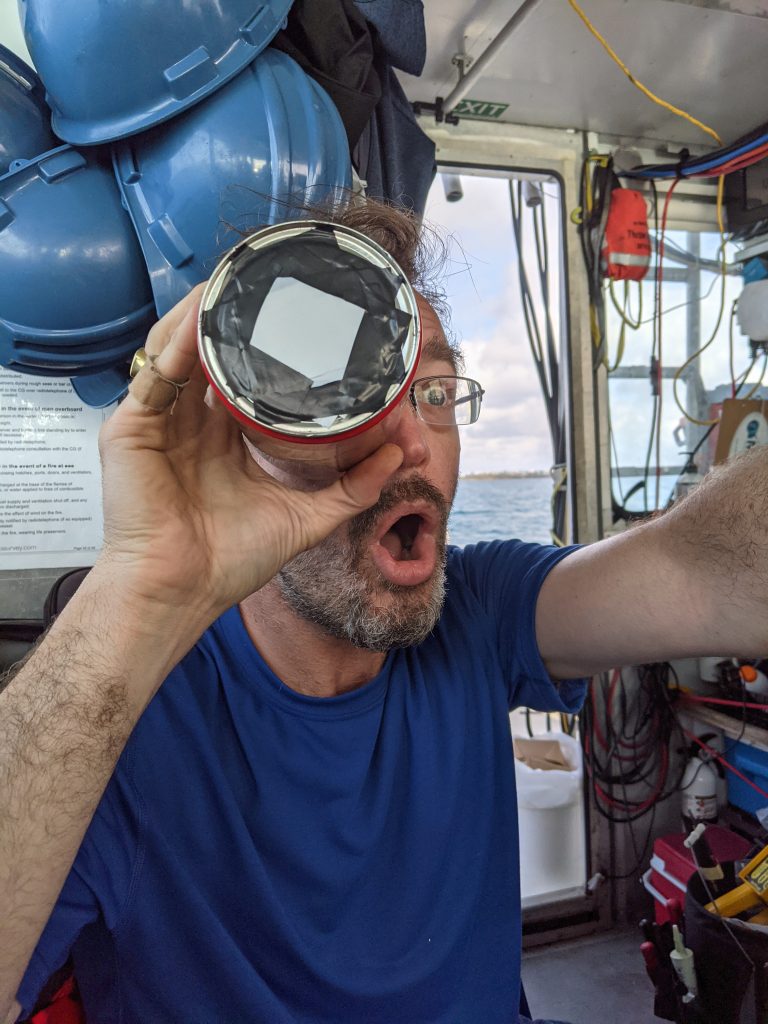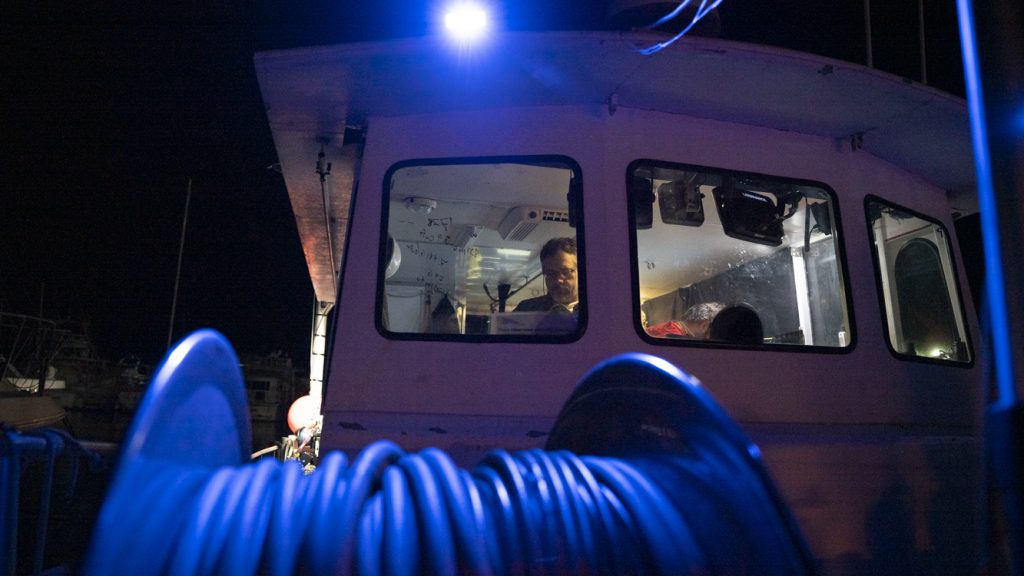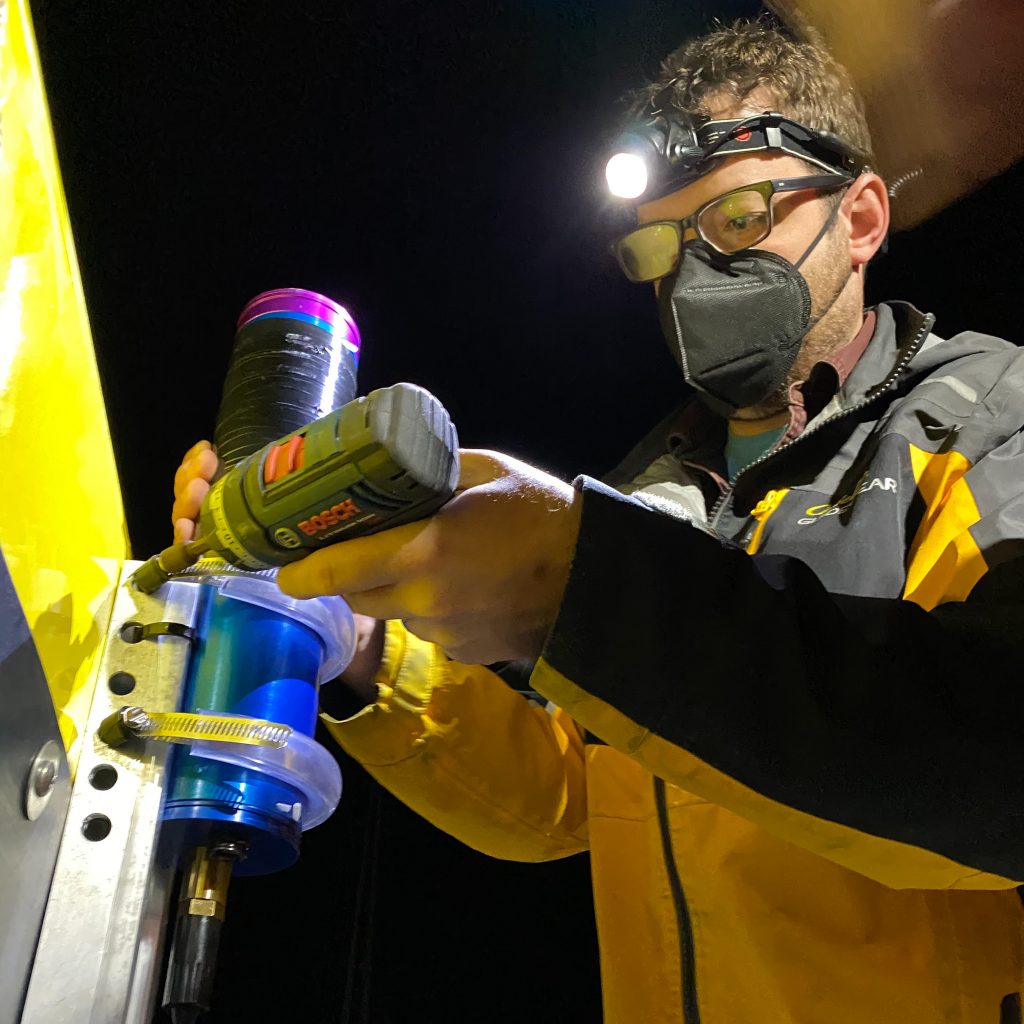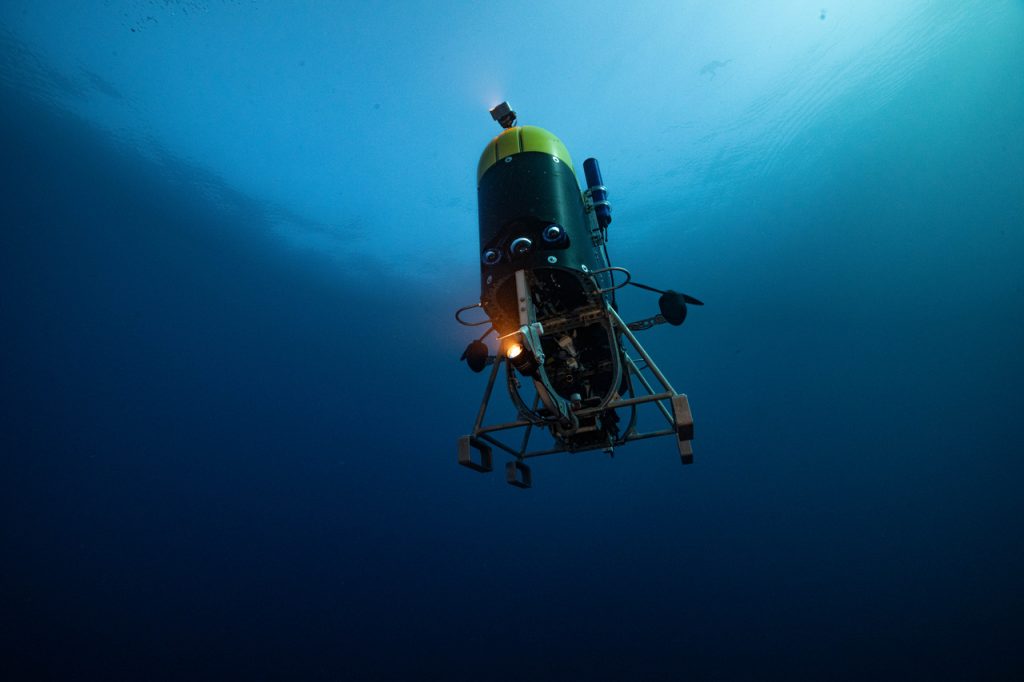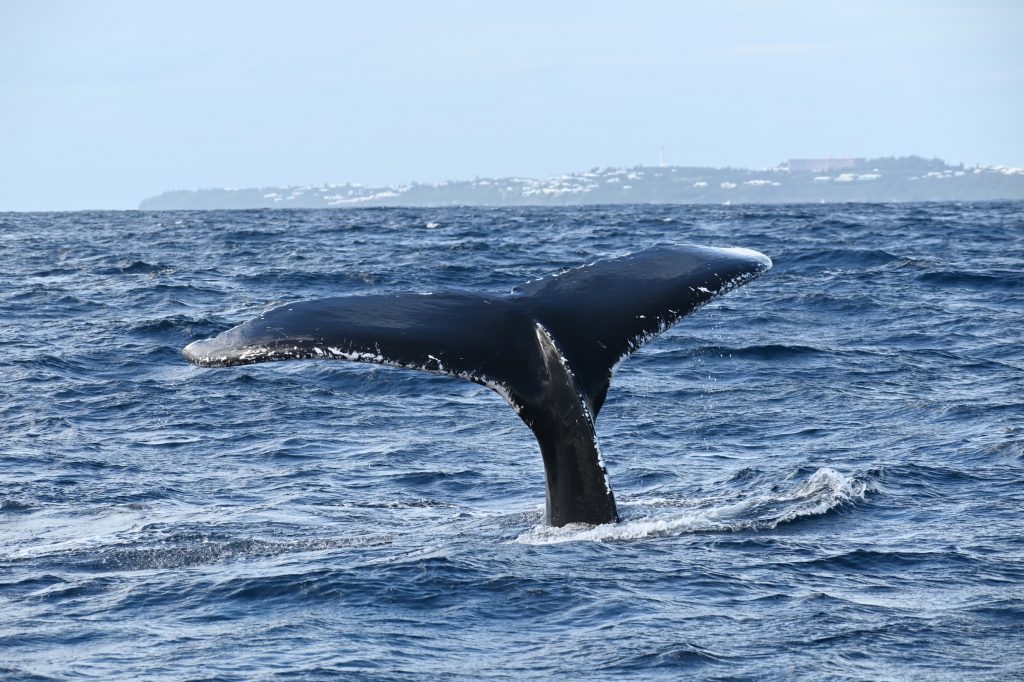Technology
Setting Mesobot Free
How do you prepare a robot to dive autonomously in the big ocean—especially around moving research ships dangling miles of steel cable? Practice, practice, practice.
Read MoreEfficiency and Ease at Sea
WHOI research assistant Erin Frates processes a batch of samples in the Wet Lab after a Mesobot dive on September…
Read MoreEnvironmental DNA is a reliable way to learn about migration from the twilight zone
Woods Hole, MA — The mid-ocean “twilight zone” holds the key to several tantalizing questions about the marine food web…
Read MoreCounting fish—with sound
Acoustic measurements from a ship and an underwater robot help scientists estimate how many fish are in the twilight zone.…
Read MoreField Notes: Success!
R/V Catapult as seen from its dinghy. (Photo: Jennifer Berglund) Back at it the following day, the deep water was…
Read MoreField Notes: Adapting to Rough Seas
After yesterday’s pre-dawn test of Mesobot’s radiometer, Bermuda’s seas were just rough enough to prevent a deep water deployment the…
Read MoreField Notes: Hunting an Isolume
Captain David Ullman preps Catapult for a 2:30am departure. (Photo: Jennifer Berglund) Today, the team set out well before sunrise,…
Read MoreField Notes: Catching Light
Research Technician Fredrick Marin attaches a highly-sensitive radiometer to Mesobot. Credit: Jennifer Berglund Since Mesobot arrived in Bermuda, it’s been…
Read MoreField Notes: Witnessing Twilight
In a rare moment of calm, Evan Kovacs takes a breath to admire dusk from Catapult’s helm. Red lighting is…
Read MoreField Notes: An Unexpected Guest
The intruding whale. (Photo: David Ullman) The first rule of field work: always expect the unexpected. But while it’s second…
Read More






